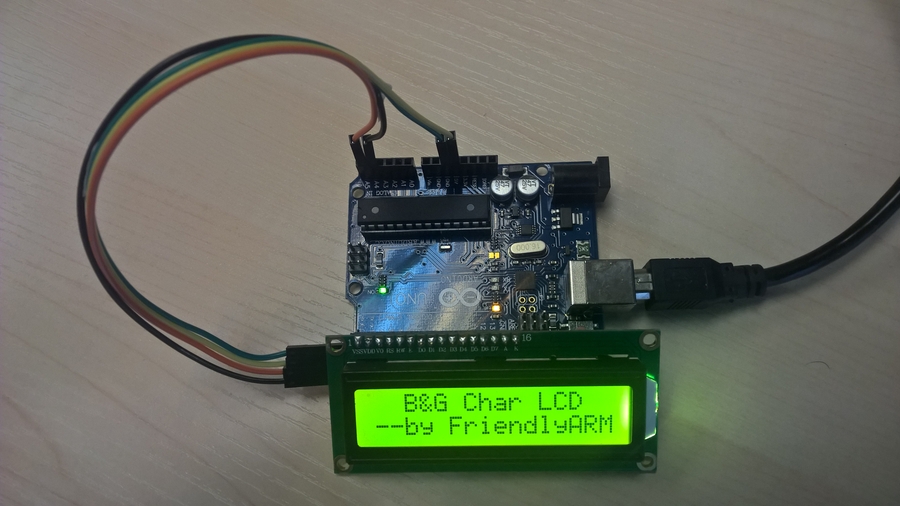LCD Display 1602 I2C
Product Link
Introduction
The module Matrix-I2C_LCD1602 is used for LCD display, which consists of two parts: LCD1602, an LCD module, and PCF8574, a GPIO expansion module. LCD1602 is an LCD display that can show 16x2 characters, which itself is a parallel interface and requires more IO resources to communicate with it. PCF8574 can be extended out of 8 general-purpose GPIO pins, it can be communicated with the main control through I2C, the data information sent by the main control will be converted into parallel signals and then forwarded to the LCD1602, so as to realize the display of the LCD1602 and the backlight adjustment function, to achieve the purpose of saving IO resources and simplify the control.

Features
I2C communication, display and backlight can be controlled
2.54mm row pin interface, easy wiring, strong versatility
IIC module PCB size (mm): 16x42
LCD1602 PCB size (mm): 36x80
Pinout
SDA
I2C SDA
SCL
I2C SCL
5V
Power supply 5V
GND
GND
Dimensions

How to Use
Preliminary
Make sure your Arduino board can download and run the programme properly, here we are using an Arduino uno board.
Hardware Connection
Make sure your Arduino board can download and run the programme properly, refer to: https://www.arduino.cc/en/Guide/HomePage Here we are using an Arduino uno board.

Compile and run the test program
Since the arduino development board does not run Linux, the matrix for arduino code is managed by a separate repository:git://github.com/friendlyarm/matrix-arduino.gitClone matrix-arduino code repository
When the cloning is complete you will get a matrix-arduino directory that holds all the code that the Matrix accessory uses to support arduino. Copy the matrix-i2c_lcd1602 directory to the libraries directory of the Arduino IDE.
Start Arduino IDE Click File->Examples->matrix-i2c_lcd1602->displaychar to open the test program. Click upload to run the test program.
Code Showcase
Last updated
Was this helpful?
